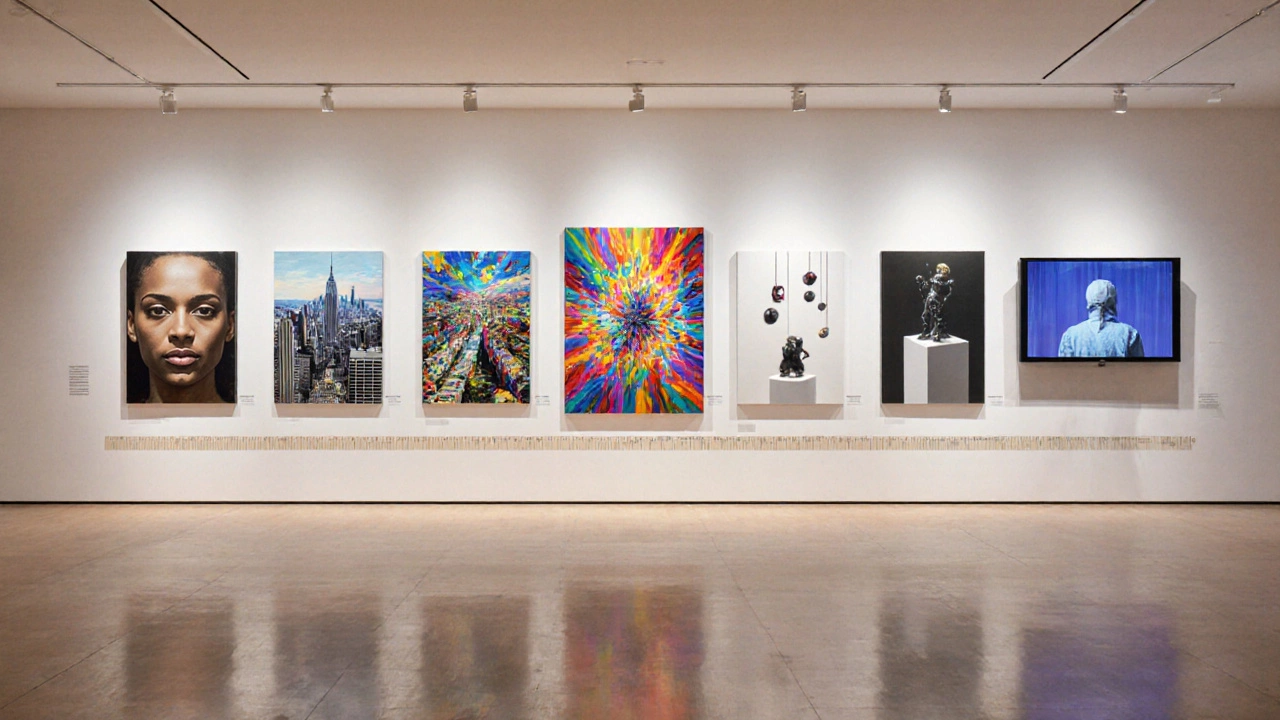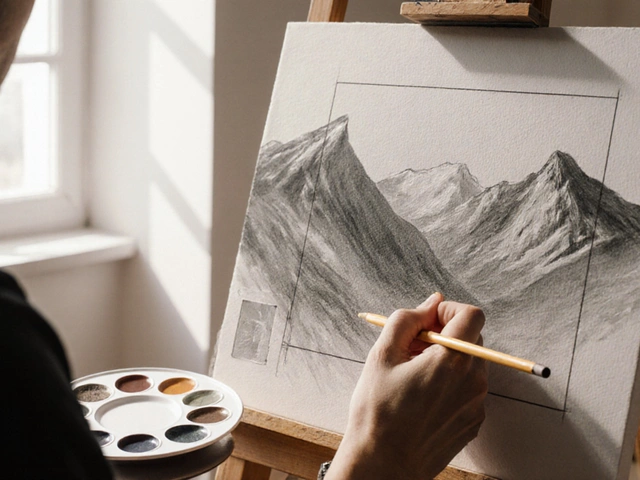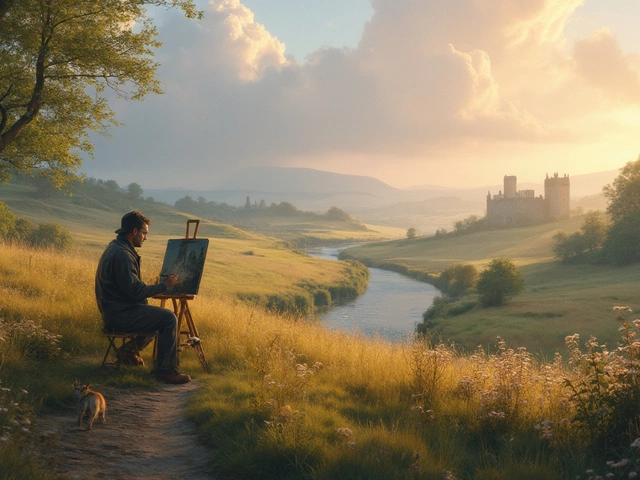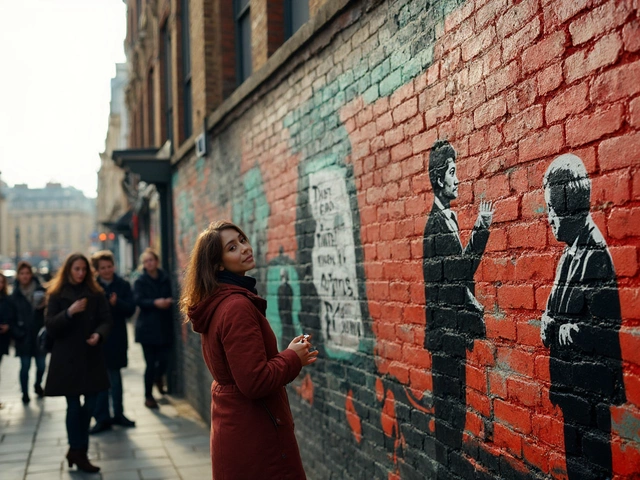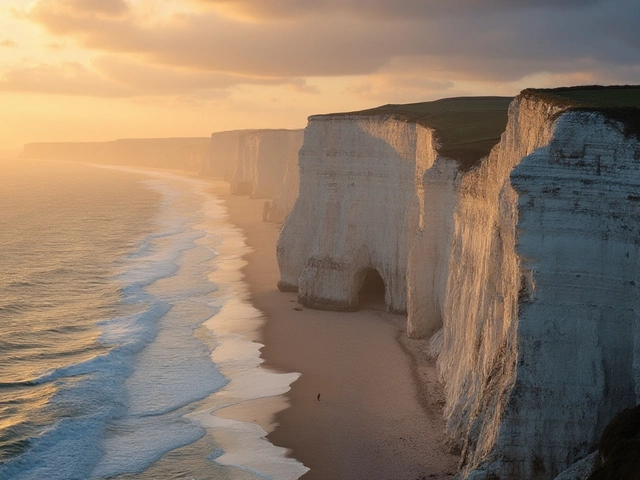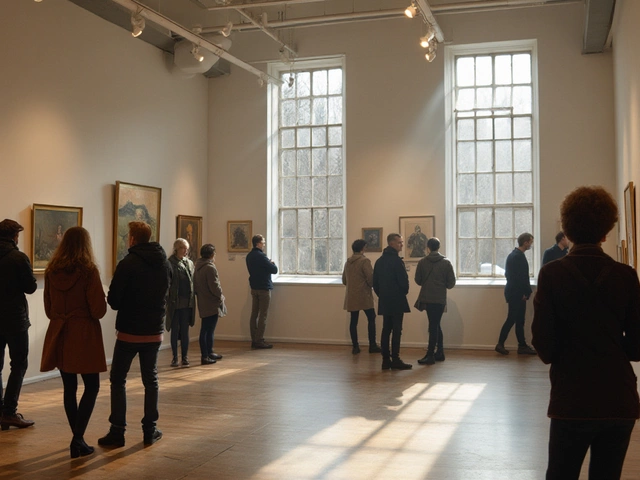Art Style Difficulty Calculator
Answer these questions to discover which art style best matches your strengths and goals:
Recommended Art Styles
Ever wondered why some artists swear by a certain style while others avoid it like the plague? The truth is, certain art styles demand a blend of technical skill, patience, and conceptual muscle that makes them feel almost insurmountable. Below we break down the criteria that make an art style "hard," spotlight the top contenders, and give you practical tips if you decide to take on the challenge.
Quick Takeaways
- Difficulty hinges on precision, concept depth, and material mastery.
- Hyperrealism and photorealism top the list for sheer technical grind.
- Abstract Expressionism tests emotional honesty more than technique.
- Conceptual and installation art push the boundaries of idea over execution.
- Start small, master fundamentals, and use modern tools to lower the barrier.
How We Judge "Hard" in an Art Style
Before naming the toughest styles, we need a clear yardstick. We looked at four main factors:
- Technical precision - How exact must the hand be? (e.g., rendering a single hair strand.)
- Conceptual depth - Does the style demand a layered idea beyond visual appeal?
- Material & tool mastery - Are there specialized media, equipment, or setups?
- Time investment - How many hours does a finished piece typically require?
Each art style we discuss scores on a 1‑10 scale for these criteria, giving us a composite difficulty rating.
Hardest Art Styles in Modern Art
Below are the styles that consistently rank highest across the four factors.
Hyperrealism is a painting and sculptural style that pushes realism to the point where the artwork is indistinguishable from a high‑resolution photograph. Artists spend months on a single canvas, layering glazes to capture every reflection, pore, and texture. The technical precision score is a solid 10, while conceptual depth sits at 6 because the subject is usually representational. Materials include oil or acrylic, but the real challenge is the patience needed for microscopic detail.
Photorealism is a style that emerged in the late 1960s, focusing on creating paintings that look like photographs, often using grid methods for accuracy. While similar to hyperrealism, photorealism leans more on photographic references and can involve large formats. Technical precision scores 9, conceptual depth 5, and the time investment frequently exceeds 200 hours per piece.
Abstract Expressionism is a mid‑20th‑century movement emphasizing spontaneous, gestural brushwork and the physical act of painting as the artwork’s essence. Here the difficulty isn’t in replication but in channeling raw emotion without slipping into cliché. Technical precision is low (2), but conceptual depth hits a 9, and the time spent can vary wildly depending on the artist’s process.
Surrealism is a style that blends realistic detail with dream‑like, illogical juxtapositions to explore the unconscious mind. The challenge lies in marrying precise rendering with fantastical concepts. Technical precision rates 7, conceptual depth 9, and artists often need to master multiple media (painting, collage, digital).
Conceptual Art is a movement where the idea behind the work outweighs the aesthetic or material execution. Difficulty comes from intellectual rigor rather than brushstrokes. Technical precision scores 3, but conceptual depth reaches a perfect 10; material mastery varies, and execution can be surprisingly quick or extremely elaborate.
Installation Art is a three‑dimensional work designed to transform a space, often incorporating sound, light, and interactive elements. Artists must juggle engineering, logistics, and narrative coherence. Technical precision (in terms of construction) is 8, conceptual depth 8, material mastery high (custom rigs, tech gear), and time investment can stretch into weeks.
Digital 3D Rendering is a process of creating photorealistic images using software like Blender, Maya, or ZBrush, often for visual effects or virtual art installations. The learning curve for the software alone is steep; mastering lighting, texture mapping, and physics simulations adds layers of difficulty. Technical precision 9, conceptual depth 7, and a typical project can demand 150+ hours.
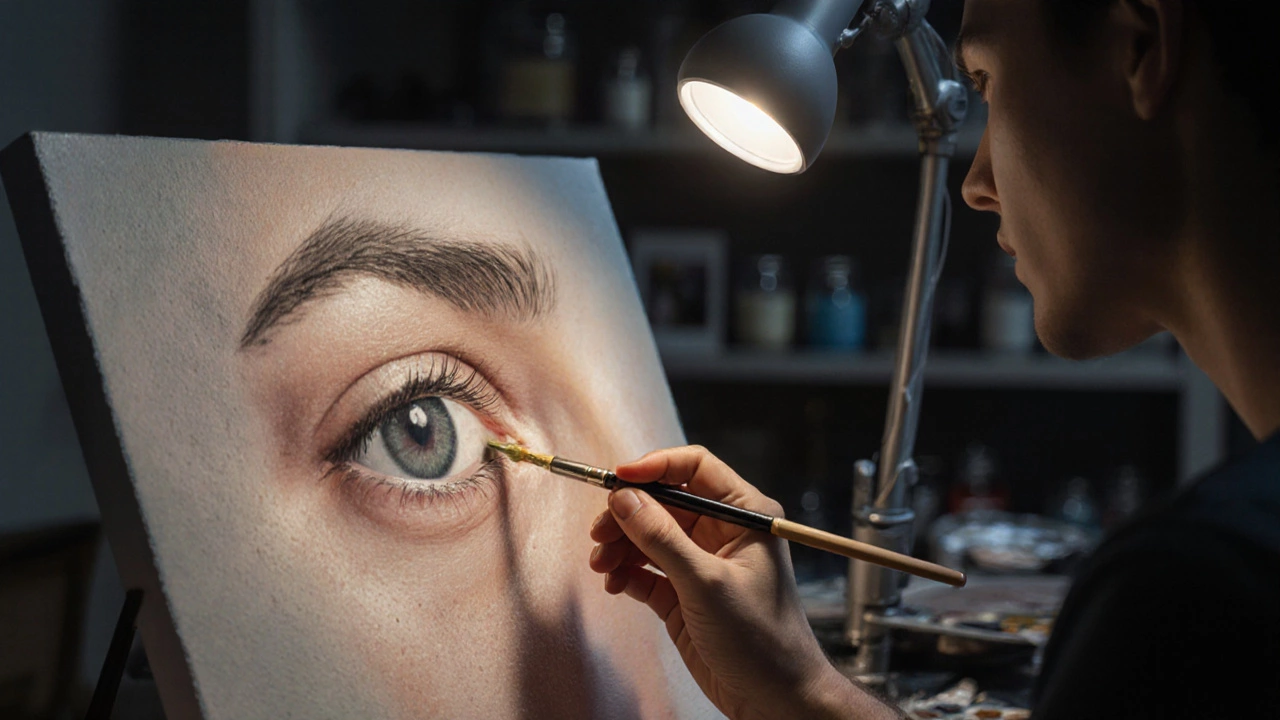
Side‑by‑Side Difficulty Comparison
| Art Style | Technical Precision (1‑10) | Conceptual Depth (1‑10) | Material/Tool Mastery (1‑10) | Typical Time per Piece (hours) |
|---|---|---|---|---|
| Hyperrealism | 10 | 6 | 8 | 200‑500 |
| Photorealism | 9 | 5 | 7 | 150‑300 |
| Abstract Expressionism | 2 | 9 | 5 | 50‑200 |
| Surrealism | 7 | 9 | 6 | 100‑250 |
| Conceptual Art | 3 | 10 | 4 | 30‑150 |
| Installation Art | 8 | 8 | 9 | 200‑400 |
| Digital 3D Rendering | 9 | 7 | 9 | 150‑350 |
Tips for Tackling a Tough Art Style
Deciding to dive into a demanding style? Here’s a short game plan that works across the board:
- Start with fundamentals - Master basic drawing, color theory, and perspective before adding layers of complexity.
- Break projects into phases - Sketch, underpainting, details, and final touches each get a dedicated time block.
- Leverage technology - For hyperrealism, use a high‑resolution reference monitor; for digital 3D, learn hotkeys and use render farms.
- Study masters - Examine works by Chuck Close (hyperrealism), Gerhard Richter (photorealism), or Anish Kapoor (installation) to see how they solve problems.
- Document the process - Photo or video logs help you spot inefficiencies and build a personal “cheat sheet.”
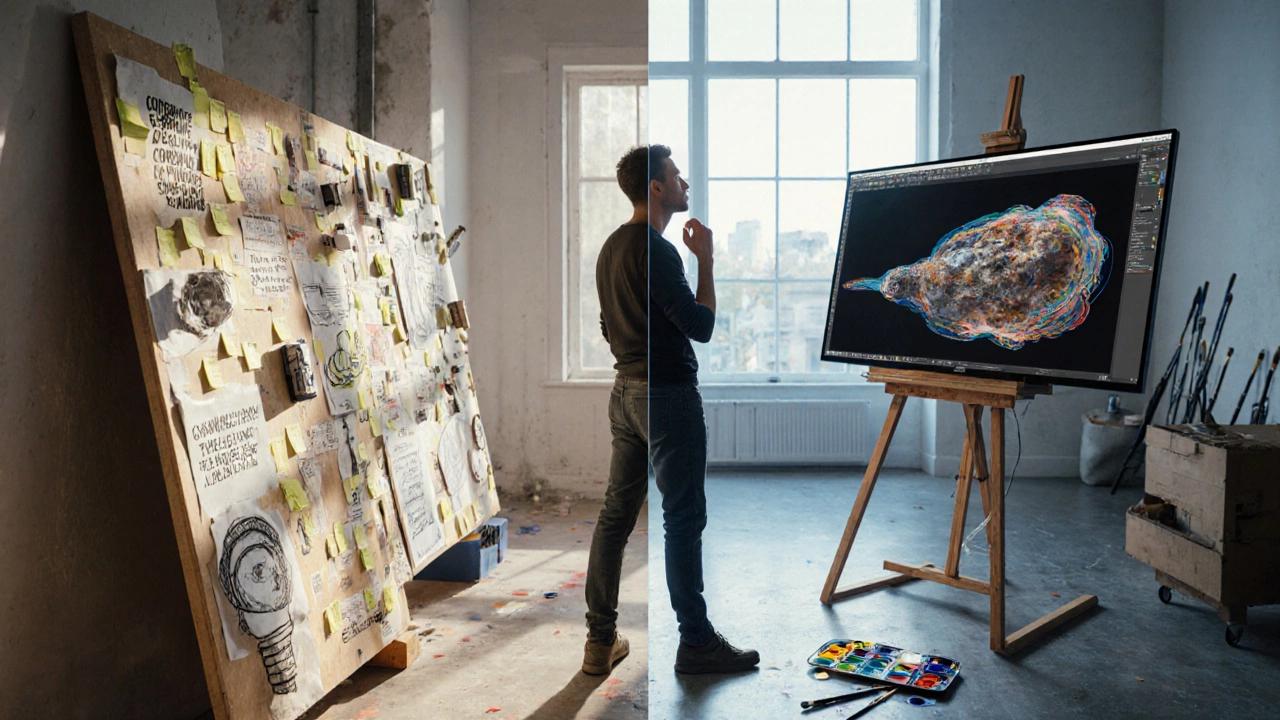
Common Pitfalls and How to Avoid Them
Even seasoned artists stumble. Recognizing the traps keeps you from burning out.
| Pitfall | Why It Happens | Quick Fix |
|---|---|---|
| Skipping drafts | Desire for speed or perfectionism | Allocate at least 20% of time to low‑fidelity sketches. |
| Ignoring material limits | Using cheap brushes or low‑resolution screens | Invest in proper tools; they pay off in saved hours. |
| Over‑conceptualizing | Getting stuck in ideas, never painting | Set a hard deadline for the concept phase. |
| Under‑estimating time | Optimistic planning | Apply a 1.5× multiplier to your time estimate. |
Choosing the Right Challenge for You
Not every tough style fits every artist. Ask yourself:
- Do I enjoy meticulous detail (hyperrealism) or conceptual brainstorming (conceptual art)?
- What resources do I have - a studio, digital hardware, or a large gallery space?
- Am I looking for a personal breakthrough or a portfolio piece that showcases skill?
Answering these questions narrows the field and turns a daunting "hardest art style" quest into a purposeful artistic goal.
Frequently Asked Questions
Which art style is technically the most demanding?
Hyperrealism usually tops the list because it requires flawless rendering of every minute detail, often taking hundreds of hours for a single canvas.
Can I practice a hard style without buying expensive supplies?
Yes. Many artists start with digital tools or affordable acrylics before moving to oil or advanced materials.
Is conceptual art considered "hard" even though it looks simple?
Conceptual art is hard in the intellectual sense. The challenge lies in crafting a compelling idea that stands on its own, not in brushwork.
How long does a typical hyperrealist painting take?
Most hyperrealist pieces require 200 to 500 hours, depending on size and subject complexity.
What beginner steps help before tackling a hard style?
Build a solid foundation in drawing, study anatomy, and practice value studies. Then move on to the specific techniques of your chosen style.
At the end of the day, the "hardest" label is a personal benchmark. Choose a style that excites you, respect its demands, and watch your skills level up faster than you imagined.
